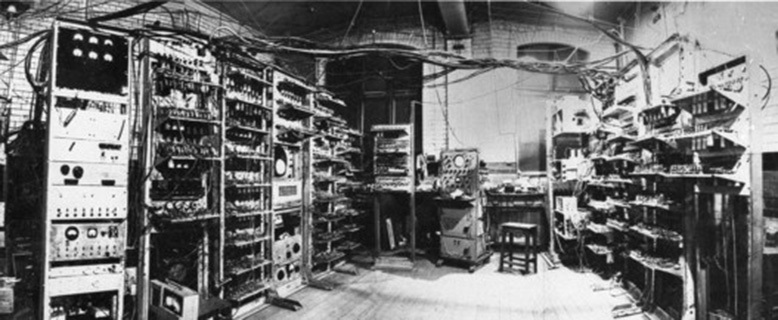20 most notable events in the history of backup and recovery
- Transfer
- Recovery mode

1539 year. Henry VIII, king of England, in order to decide whom to marry the next time, sent the artist Hans Holbein to make a reliable copy ...
However, we will start from the very beginning.
13.7 billion years BC - The universe arose from a singularity; those who believe in the Big Bang theory predict a coming catastrophe ...
3.8 billion years BC - The beginning of life on Earth. It is believed that the first cell originated from self-replicating RNA, which later developed into DNA. DNA is a repository of biological data, genetic information that allows all modern living creatures to function, grow and reproduce themselves. Or in another way, we are a backup of our parents. Hello to the therapist from me.
65 million years BC- Dinosaurs, a backup was not made.

3200 BC - The invention of writing. In order not to forget different things, the ancient Sumerians began to record them. The books give a good indicator of the recovery point [RPO] (if you have a good chronicler), but the recovery time [RTO] is terrible: the average adult reads at 300 words per minute , too slowly.
552 years BC - Cyrus the Great remembered the names of all the soldiers of his army, about 10,000 Persians. An impressive achievement for human memory, but also a bitter lesson about single-point-failure. He was killed in 530 BC, and information disappeared with him.

48 years BC- Fire at the Alexandria Library. Among other books from the “list of the 10 most noteworthy lost books of all time,” turned into smoke the second volume of Aristotle's poetry, and humanity suspected a significant miscalculation in its cunning backup plan: paper is very flammable.
1347 - The first insurance contract known to us was signed in Italian Genoa. It was great for those who bought and sold goods, and also owned property. But it is difficult to measure the value of information; most people would prefer to return their data instead of receiving compensation for their loss.
1436- Johannes Gutenberg, a former jeweler, created the first printing press in Germany. He used his metalworking skills to make metal letters, dipped them in ink, and made a copy on paper. This significantly accelerated the creation of copies, a serious step towards data recovery.
1539 - Copying based on images, the first steps. Henry VIII, king of England, in order to decide whom to marry next time, sent the artist Hans Holbein to make a reliable copy of what European princesses look like from his list. Based on the obtained images, Henry made a choice and proposed marriage to Anna Klevskaya, but when he saw her personally, he realized that he represented her in a completely different way. Invalid / damaged copy.

1937- The invention of the photocopy machine. Successfully and accurately copies documents from the beginning of the 20th century. Hey, what are these gray spots on paper? And what about rainforest disaster recovery?
1949 - Manchester Mark I opened the era of computers with a program stored in main memory; the forests of the Amazon basin received a chance of survival.

1964 - Computers enter the mass market. At the World Fair in New York, the programma 101 computer was shown to the public. One of these computers was used on Apollo 11, and was, in fact ... a calculator. “One small step ...” (at that time!)
1972- Mainframes make applications and fast data processing available to hundreds of people, built-in hardware redundancy provides outstanding recovery rates (RPO and RTO). The ancient Sumerians would have loved it wildly.
1990 - Arcserve 1.0 released by Cheyenne software. The era of distributed computing is on the rise, the main thing is not to forget about backing up to these small rectangular little things called “tapes”.
1998 - VMware is based in Palo Alto, California. Although the concept of hypervisors dates back to the 1960s, it was VMware that brought virtualization to the mass market. Virtualization will reverse backup and disaster recovery.

2006- XOsoft's WANsync technology is integrated into Arcserve. For the first time in the market for medium-sized companies, a single solution for backup and instant switching to a backup system has appeared.
2008 - Microsoft launches a product competing with VMware and calls it Hyper-V. If you have not been virtualized, you will now. Specific software for backing up virtual systems exists, but is poorly integrated with physical servers, copying to tape and is not cross-platform for Microsoft / Linux.

2014- Unified Data Protection (UDP) product released by Arcserve. It was specifically designed for virtual environments, VMware, Hyper V and Xen, while remaining convenient and functional on physical servers. UDP provides the ability to copy disk images and files, replicate application data, and hot swap to a backup server. UDP provides advanced functionality when working with tapes; compatible with Windows and Linux, physical and virtual; copies and performs disaster recovery from disks, tapes and from the cloud using a single console; RPO = 0. RTO = 0.
2015 - Arcserve UDP wins three awards at VMWorld 2015, including the Gold Disaster Recovery and Backup Award in Virtualized Environments, Best Disaster Recovery Project, and Best on Show.

2016 - You are here.
NASA's Curiosity Mars rover confirms the existence of an ancient civilization on Mars:
